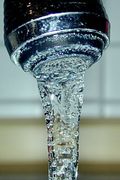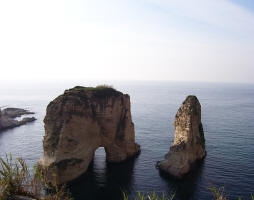 The state of our rivers: EU-wide survey results
The state of our rivers: EU-wide survey results
A Europe-wide survey of rivers and streams has tested water samples for a range of polar organic pollutants. The study highlights the problems associated with the persistence of industrial pollutants and monitoring emerging pollutants.
The continual entry of organic pollutants derived from personal care products, pharmaceuticals and industrial chemicals via wastewaters into rivers and streams is a cause for concern. Little is known about the long-term, potentially toxic effects of these increasingly complex mixtures of pollutants. Water-soluble compounds can also contaminate ground and drinking waters.
The survey was conducted by collecting water from 122 sampling points from over 100 bodies of water throughout Europe in autumn 2007, representing a range of sizes, from small streams to large rivers. They were in varying states of cleanliness, from unspoilt to contaminated. 27 European Countries, most of which were EU Member States, were covered.
The research team, led by the European Commission's independent Joint Research Centre (JRC), identified the concentrations of the target pollutants and the number of times they were detected in rivers. Relatively speaking, the most frequently detected compounds at noteworthy concentrations were benzotriazole, tolytriazole (which are anti-rust substances), caffeine, carbamazepine (a drug used for the treatment of epilepsy) and nonylphenoxy-acetic acid, a degradation product of industrial surfactants used in cleaning products. These agents are suspected to disrupt the reproductive functions of humans and wildlife - known as so-called 'endocrine disrupting compounds'. The study detected only low concentrations of pesticides. However, the sampling was conducted in the autumn when few pesticides are used.
Rivers with the relatively highest amounts of perfluorinated acids (PFOS and PFOA), were identified. These chemicals are major industrial pollutants and can persist in the environment. They have been detected in human blood worldwide. The study suggests that the Rivers Po in Italy, Danube, Scheldt in Belgium and the Netherlands, Rhone in France and the Wyre in the UK contained significant amounts of PFOA, although not all major European rivers were tested. PFOS was found in similar amounts, but its emissions were more widely distributed throughout Europe.
Overall, the cleanest water was sampled from areas with a low population density. Only 10 per cent (11 of the 122 samples) of the samples contained virtually no chemicals.
The study also highlights the need to anticipate environmental problems stemming from the use of chemicals in Europe. In this context the new European legislation REACH (Registration, Evaluation, Authorisation and Restriction of Chemical substances), which requires companies to provide data on the amounts of chemicals used and to perform environmental risk assessments, will contribute also to the quantitative and qualitative understanding of water pollution.
| Contact information |
Email: giovanni.bidoglio@jrc.it |
|---|---|
| News type | Inbrief |
| File link |
http://ec.europa.eu/environment/chemicals/reach/reach_intro.htm |
| Source of information | Loos, R., Gawlik, B.M., Locoro, G., et al. (2009). EU-wide survey of polar organic persistent pollutants in European river waters. Environmental Pollution. 157: 561-568. |
| Keyword(s) | Climate Change |
| Subject(s) | ANALYSIS AND TESTS , CHARACTERISTICAL PARAMETERS OF WATERS AND SLUDGES , INDUSTRY , PREVENTION AND NUISANCES POLLUTION , RISKS AND CLIMATOLOGY , WATER QUALITY |
| Geographical coverage | EU |
| News date | 10/02/2009 |
| Working language(s) | ENGLISH |
 you are not logged in
you are not logged in





